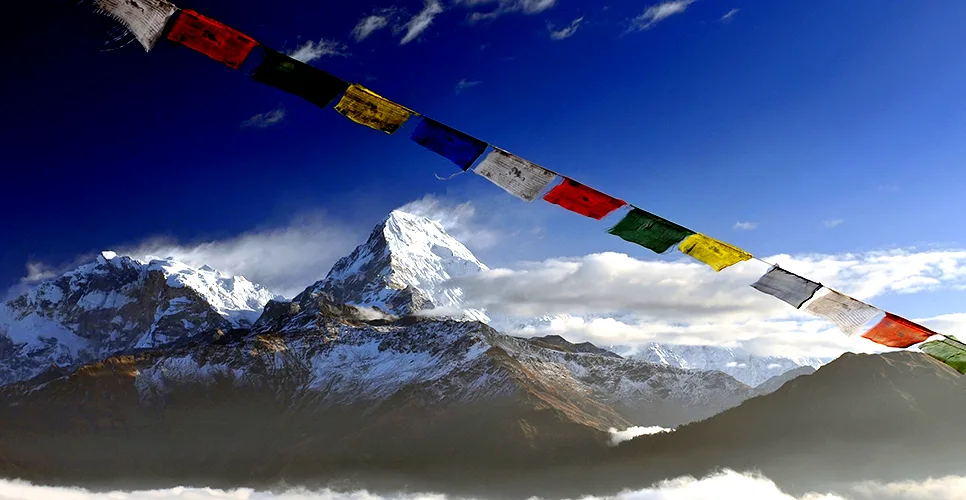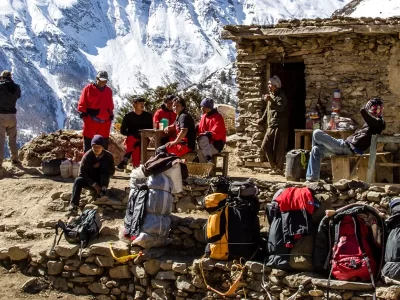Nepal’s Monsoon Season: What to Expect
The monsoon season delivers rain, increased humidity, and higher temperatures to the majority of Nepal starting around mid-June, reaching its peak in July and August, and ending in early September. It’s true that leeches exist, temperatures can get uncomfortable, and that the vistas of the mountains are frequently blocked by clouds. However, now is still a terrific time to go trekking, and these are our top suggestions for how to do it.

Expert Advice
- Drive as deep into the mountains as you can before beginning your walk.
- After your adventure is over, give yourself a two-day window before your flight out.
- An umbrella is perfect for lower, warmer elevations!
- A waterproof, breathable shell is required for higher altitudes.
- Start your day early as it often it only rains in the afternoon
- Start your day early as it often it only rains in the afternoon
The monsoon season in Nepal, which lasts from mid-June to early September, is perfect for trekking in isolated areas like Mustang and Dolpo as well as other portions of the nation that keep dry because they are in the rain shadow. Due to the fact that Nepal’s busiest treks are typically calm at this time of year, it’s also a terrific time of year for a cultural trek and ideal if you like to have the trails to yourself. (However, you should be cautious of leeches in low-altitude forested areas and flexible with your travel plans as journey disruptions due to bad weather might happen frequently.)
Annapurna region monsoon preparation advice
You may easily acquire ground transportation to Beni if your aircraft out of Jomsom is delayed, though you will need to switch vehicles a few times. The road occasionally becomes blocked in two locations (between Tatopani and Galeswhor), however as it is the peak travel season for Indians traveling to Muktinath, this is quickly fixed.
Tips for the Everest Region during the Monsoon
You’ll experience far less precipitation than in Nepal’s lower areas, even in the upper reaches of the Everest region. A fantastic time to visit Everest is during the monsoon season since you may avoid the crowds on one of Nepal’s busiest hiking routes. Be mindful that flights into and out of Lukla frequently have delays, so be sure to allow extra time before and after your hike to take this into account.
How to Prepare
Each day, you may anticipate 3 to 4 hours of rain, usually at the same time. There is frequently a build-up of heavy fog and clouds when hiking in the forests and lower elevations, which occasionally clears to expose the views.
Suggested Equipment
The best option for lower elevations is an umbrella because even the best waterproof shells can become too warm. Given that humidity levels are frequently high, lightweight, quick-drying clothing is preferred. Although temperatures and humidity levels are considerably more tolerable at higher elevations, it is still possible for it to rain, therefore you should have a waterproof shell.
Monsoon season transportation
The major difficulty in hiking during the monsoon is getting to the trailhead since bad visibility can cause airplane delays and cause roads to become excessively muddy or, worse, blocked by a landslide. However, there’s a considerable probability that your flight will take off; all you need to do is check ahead to make sure the roads are clear.
To avoid any problems, it’s still a good idea to account for transportation delays in your plans and leave yourself with a safety margin. Landslides that occur along Nepal’s main roadways frequently cause flights to be delayed and can stop vehicle traffic.
http://www.swayambhunath.com/shantipur/
https://himalaya.socanth.cam.ac.uk/collections/rarebooks/downloads/History_Ancient_Medieval_Nepal.pdf
Recent Blog Posts

- September 23, 2023

- September 22, 2023

- September 22, 2023

